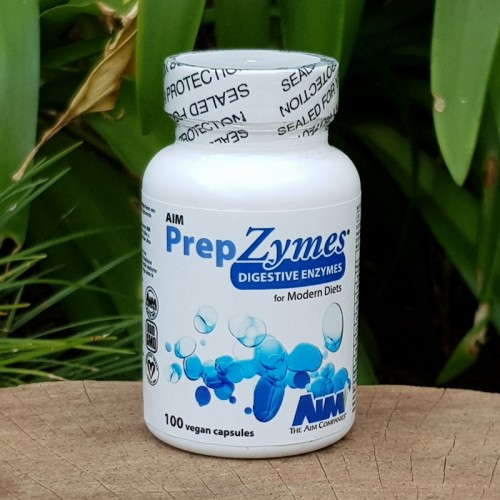The Modern Rules Of Manufacturing Overhead
Contents:


So, an adjusted projection for this year’s factory overhead would be $1,545,000 – or 3% more than last year’s. Glue, staples, nuts, bolts, nails, plastic wrap, tape, etc., elements common to a variety of products without specific measurements. This may sound complex, but businesses must file their accounts according to GAAP standards. For this reason, a professional accountant can be invaluable in this process. To achieve full GAAP compliance, a portion of overhead must be allocated to every item produced by an organization.
These costs are mostly fixed and accrue at the initial stages of the production unit. As such, the costs accrue regardless of whether the products are manufactured or not. The total manufacturing overhead of $50,000 divided by 10,000 units produced is $5. So, for every unit the company makes, it’ll spend $5 on manufacturing overhead expenses on that unit. These are costs that are incurred for materials that are used in manufacturing but are not assigned to a specific product.
Physical costs
The straight line depreciation method is used to distribute the carrying amount of a fixed asset evenly across its useful life. This method is used when there is no particular pattern to the asset’s loss of value. Manufacturing overhead is an essential part of running a manufacturing unit. Tracking these costs and sticking to a proper budget can help you to determine just how efficiently your business is performing and help you reduce overhead costs in the future.
SkuVault, Inc. uses the information you provide to contact you about our content, products, and services. Well, it’s important to understand both types of costs in order to make informed decisions about pricing and profitability. Harold Averkamp has worked as a university accounting instructor, accountant, and consultant for more than 25 years. As we mentioned above you can track costs on the real-time dashboard and real-time portfolio dashboard, but you can also pull cost and budget data in downloadable reports with a keystroke.
Let’s define manufacturing overhead, look at the manufacturing overhead formula and how to calculate manufacturing overhead. There are so many costs that occur during production that it can be hard to track them all. These costs must be included in the stock valuation of finished goods and work in progress. Both COGS and the inventory value must be reported on the income statement and the balance sheet. For example, if your company has $80,000 in monthly manufacturing overhead and $500,000 in monthly sales, the overhead percentage would be about 16%.
How Do You Calculate Allocated Manufacturing Overhead?
Keep reading to learn how to find manufacturing overhead and account for these costs in your financial statements. To assign the cost of factory overheads to each product, it is important to establish a correlation between the cost of manufacturing overhead and the direct labor hours. You also need to take into account applied overhead costs and how to find manufacturing overhead applied. If you need to know how to calculate manufacturing overhead applied costs, you first need to know what would count as an applied cost. You can think of things like property taxes, rent of the manufacturing facility, set salaries, or recurring fees set by the government.
Manufacturing overheads are all costs endured by a business that is within the physical platform in which the product or service is created. Difference between manufacturing overheads and administrative overheads is that manufacturing overheads are categorized within a factory or office in which the sale takes place. Whilst administrative overheads is typically categorized within some sort of back-office or supporting office. Although there are cases when the two physical buildings may overlap, it is the usage of the overheads that separates them. Sometimes a wrong budgetary estimate can lead to higher manufacturing overhead. Manufacturing overheads are fixed in nature, and they do not have any co-relation with the unit manufactured.
What are the examples of factory overheads?
Every single tax shield unless government owned is subject to some form of property tax. Therefore, the taxes on production factories are categorized as manufacturing overheads as they are costs which cannot be avoided nor cancelled. In addition, property taxes do not change in relation to the business’s profits or sales and will likely remain the same unless a change by the government administration.
This includes the costs of indirect materials, indirect labor, machine repairs, depreciation, factory supplies, insurance, electricity and more. An activity base is chosen as a means for allocating overhead costs to production units. Activity bases are measures of production that can closely account for any differences in the amount of overhead actually incurred.
Only $90,000 was assigned directly to inventory and the remainder was charged to cost of goods sold. Indirect material costs, such as minor spare parts, stationery, oil and grease, and small tools. 3M Co. reports beginning raw materials inventory of $902 million and ending raw materials inventory of $855 million. Assume 3M purchased $3,646 million of raw materials and used $3,692 million of raw materials during the year. Compute raw materials inventory turnover and the number of days’ sales in raw materials inventory. These expenses have no direct connection to the production of commodities.
Factory Overheads
This information can be used to make important decisions about https://1investing.in/ levels and product pricing. These overhead costs don’t fluctuate based on increases or decreases in production activity or the volume of output generated during manufacturing. These overhead costs aren’t influenced by managerial decisions and are fixed within a specified limit based on previous empirical data. They include equipment depreciation costs during manufacturing, rent of the facility, land used for inventory, and depreciation of the facility. Manufacturing overhead is part of a company’s manufacturing operations, specifically, the costs incurred outside of those related to the cost of direct materials and labor.

Once you have your projection, you can then divide overhead by the number of products to get a factory cost per unit. This metric tells you how much you’re spending per widget in production, which influences your company’s profit margin. Basically, anything or anyone inside the manufacturing facility that’s not directly making products should be calculated as part of overhead. Carry all burden variances to the balance sheet for the end of the period to be added to or offset against similar amounts arising in preceding or succeeding periods. Management exercises this option when it expects that a portion of the burden variance may be offset. Example of such costs are the electricity bills where by at zero production level, the electricity provider demands for an outstanding charge.
What Are The Advantages Of Manufacturing Overhead?
However, allocating more overhead costs to a job produced in the winter compared to one produced in the summer may serve no useful purpose. Expenses such as factory rent, consumables, depreciation, repairs, and upkeep are examples of factory overheads. Overhead refers to the costs of running a business that are not directly related to producing a good or service. These costs can be fixed, such as rent, or variable, such as transport costs. Effectively managing your overhead allows you to keep costs low, set competitive prices, and maximize the most of your revenues.
[Mission 2023] Insights SECURE SYNOPSIS: 5 April 2023 … – Insights IAS
[Mission 2023] Insights SECURE SYNOPSIS: 5 April 2023 ….Posted: Fri, 14 Apr 2023 08:04:39 GMT [source]
These financial costs are mostly constant and don’t change so they’re allocated across the entire product inventory. To allocate manufacturing overhead costs, an overhead rate is calculated and applied. When this is done in a precise and logical manner, it will give the manufacturer the true cost of manufacturing each item. Each of these figures must be reported on both the balance sheet and income statement. Aside from direct manufacturing costs, you must know how to calculate manufacturing overhead.
- Fixed costs in this case serves the same purpose as business overheads, it will simply be shown as a straight horizontal line on the graph as shown.
- Then, actual overhead costs are reconciled with the applied overhead costs to make sure the correct numbers end up on the balance sheet.
- Manufacturing overhead costs enable you to calculate the total cost of producing a specific good.
- Manufacturing overheads are indirect in nature, and hence to some expense, these are fixed and are not affected by the number of units produced in the production facility.
- Example of such costs are the electricity bills where by at zero production level, the electricity provider demands for an outstanding charge.
The cost of revenue is the total cost of manufacturing and delivering a product or service and is found in a company’s income statement. Activity-based costing aims to reduce the proportion of costs treated as overheads by allocating costs to each activity involved in the production of a product or delivery of a service. Others are direct costs as wages paid to labor, direct material costing are included within costs of goods sold and are termed as direct costs or direct expense. The reason that manufacturing overhead is an asset is that it creates value for your company. For example, if you pay $100 in rent per month and rent out a workshop for $200 per month, that rent expense can be deducted from taxable revenues as a business expense.

And comparisons over the period to determine under or over absorption. Our mission is to empower readers with the most factual and reliable financial information possible to help them make informed decisions for their individual needs. Finance Strategists is a leading financial literacy non-profit organization priding itself on providing accurate and reliable financial information to millions of readers each year. At Finance Strategists, we partner with financial experts to ensure the accuracy of our financial content. Overheads are an element of cost but they are a supplementary cost and cannot be directly added to a particular job.

